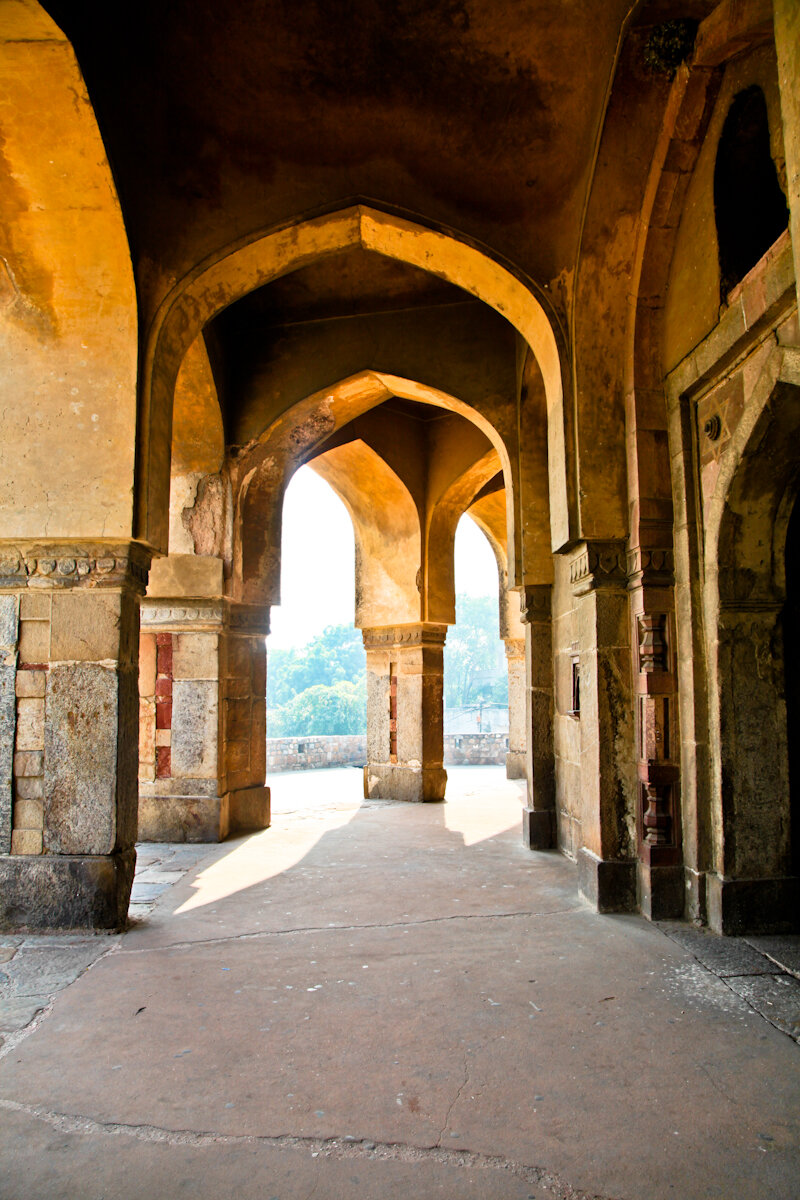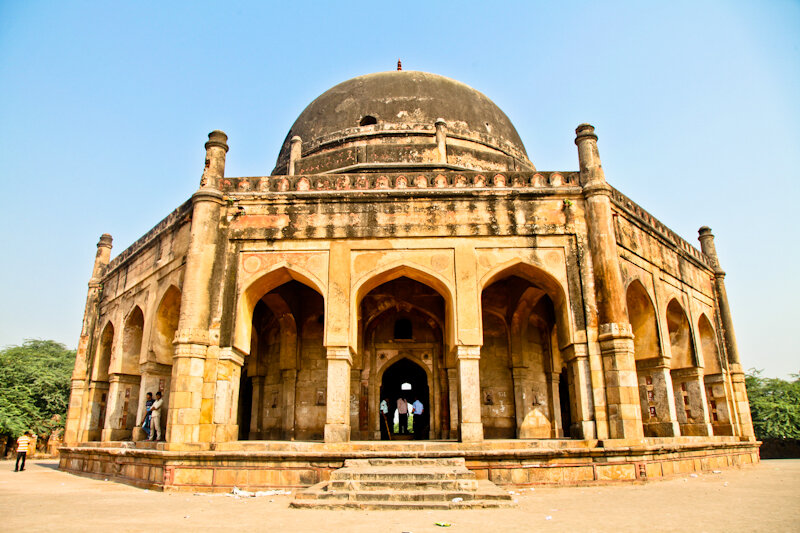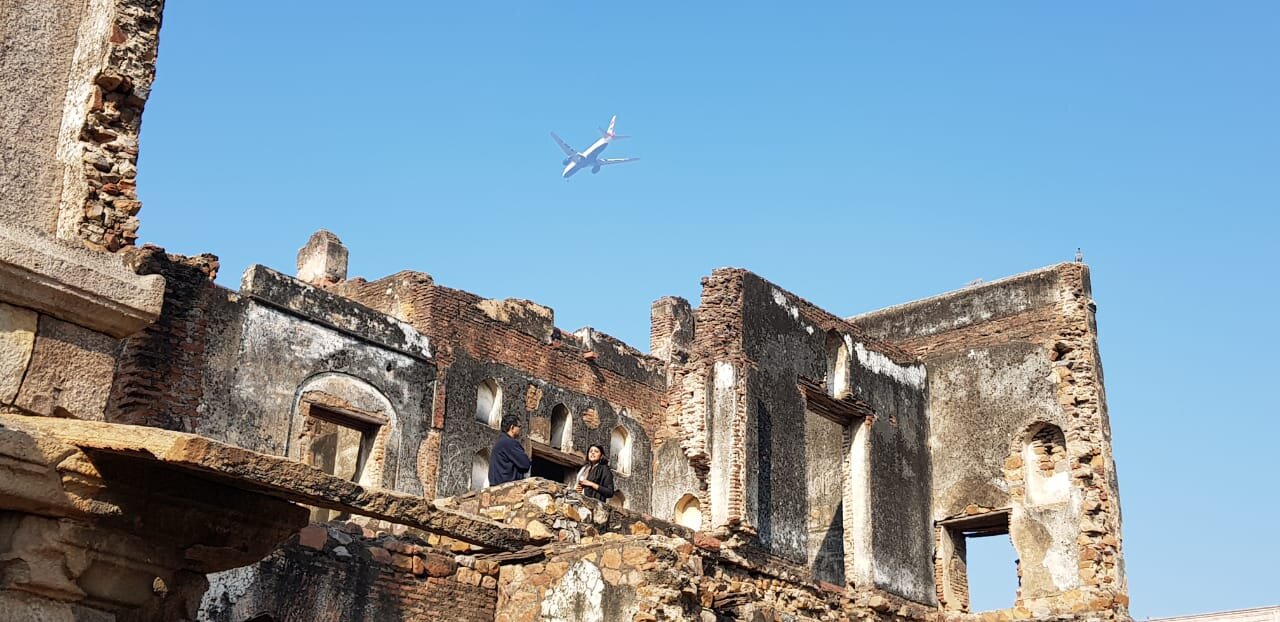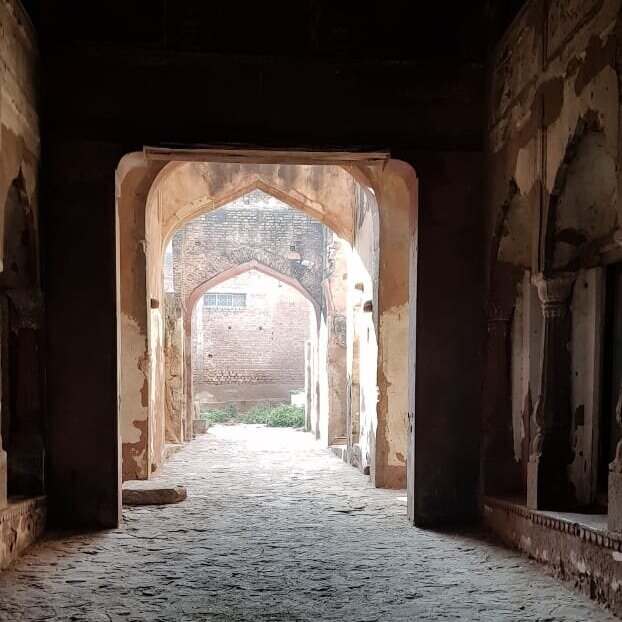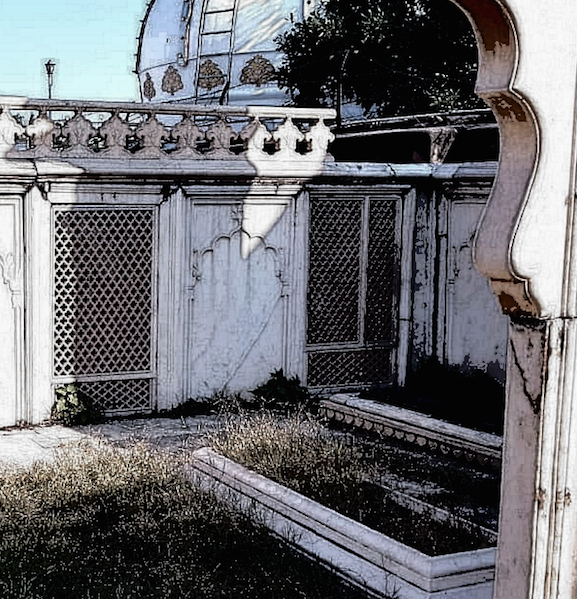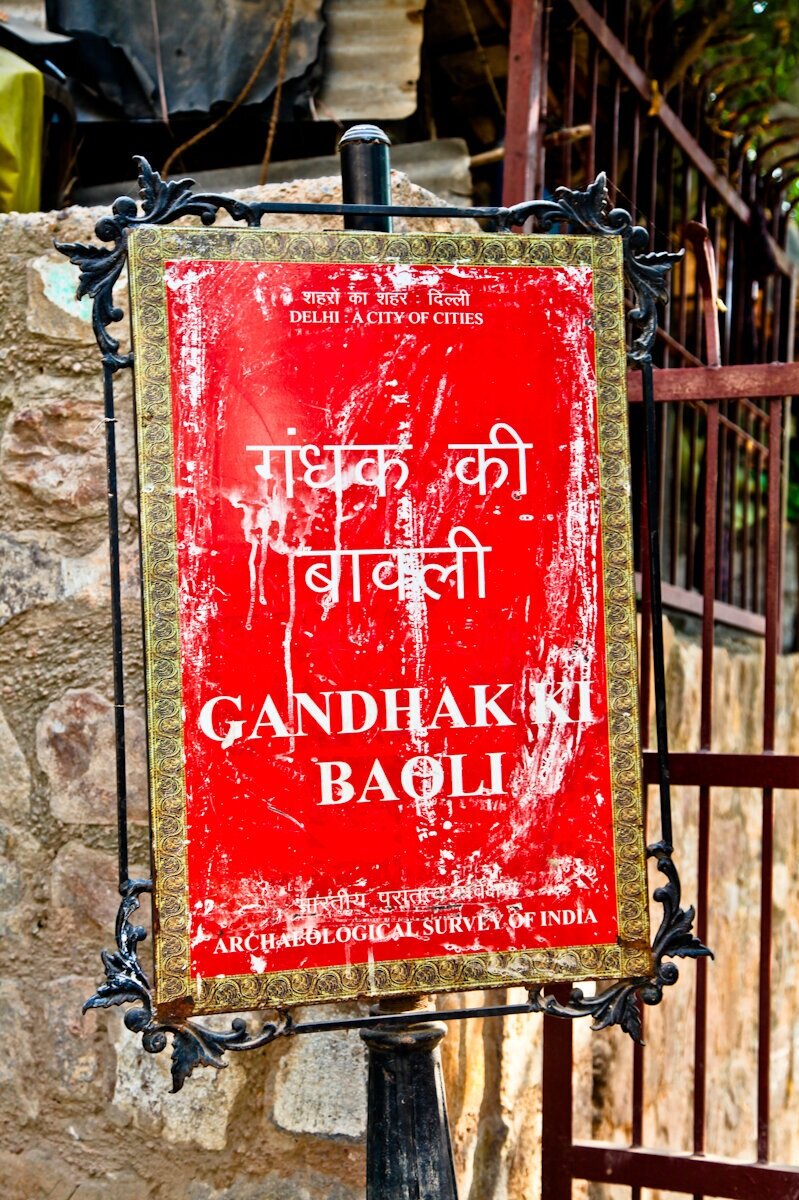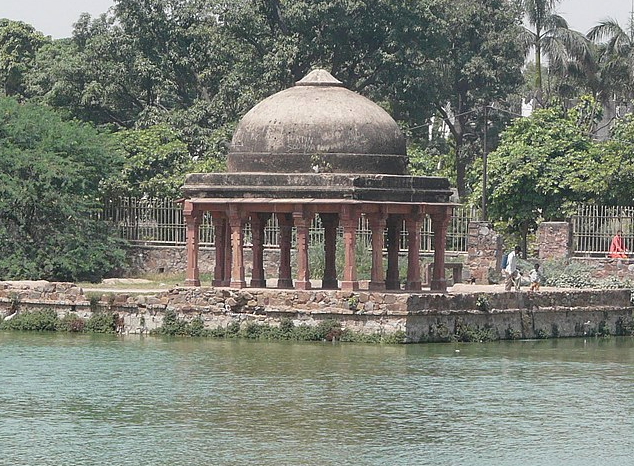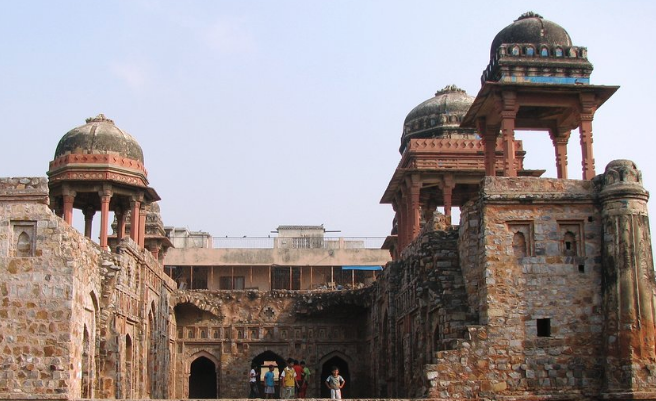MAPPING MEHRAULI
Hue naamwar be nishaan kaise kaise
Zameen kha gayi aasman kaise kaise
(Unknown lie those who were famous once, into dust were trampled the trappings of the famous)
I first read these lines in Rana Safvi's book, Where Stones Speak, many years ago and each time I have visited Mehrauli Village they have come back. They’ve been a lens, a crutch and even a comfortable chair to view the uncomfortable coexistence of the old and the new from - one struggling to exist and the other sprouting organically.
Spreading south of the octagonal tomb of Adham Khan, the urban-historic Mehrauli village, tucked away from the touristy commerce of Qutab Minar or Mehrauli Archaeological lies in wait - for someone to ask its stories, strewn in the crumbling remains.
Here are a few:
BAD BLOOD
Adham Khan’s tomb, opposite the Mehrauli Bus Terminus, stands in the middle of a busy street where buses ply every other minute. It is a busy place with squatters, hanger-ons, walkers, monkeys, children and pigeons but it stands to tell a story, many stories.
Mughal Emperor Akbar had two wet nurses – Maham Angah and Jiji Angah who couldn’t see eye to eye and their families were always engaged in rivalry. Maham Angah’s son, Adham Khan was granted the position of a general in Akbar’s army. According to Ain-i-Akbari, in 1561, he was sent to capture Malwa (MP today) ruled by an Afghan, Baz Bahadur. Adham not only defeated Baz Bahadur but went on a killing spree and took over the war spoils sending just three elephants to Akbar. When this news reached Akbar, he managed to summon him back to Agra. In a fit of rage, blaming Atgah Khan, Prime Minister and Jiji’s Angah’s husband, for his downfall, Adham Khan stabbed him. Akbar had him punished by having him repeatedly thrown from the ramparts of Agra Fort unto death.
Adham Khan’s body was then brought to Delhi and buried here. On Maham Angah’s death, her body was also buried next to her son. In the Sur-Lodi and Sayyid dynasty octagonal tombs were associated with traitors and it is possible that Akbar had Adham Khan’s tomb built in the style.
After the fall of the Mughals, a British officer, Sir Blake of the Bengal Civil Service took a fancy to the octagonal tomb and converted it into his private residence. He removed the graves in order to make way for a grand dining hall. After his demise, the tomb was used as a British Rest House and later as a Police Station and a Post office until Lord Curzon had the bungalow vacated and restored the grave of Adham Khan. Maham Angah’s grave was never found.
Legend has it that many women resist visiting the tomb because it carries the curse of Rani Roopmati, whose lover -Baz Bahadur was killed by Adham Khan.
SEEKING THE SAINT
A short distance from Adham Khan’s tomb is the shrine of the Sufi Saint Qutbuddin Bakhtiyar ‘Kaki’. He came from Osh in Fergana valley to Delhi after the conquest of the Delhi by Qutbuddin Aibak and later became the spiritual master of Iltutmish (the second Slave Sultan of Delhi). His real name was Qutbuddin and Bakhtiyar was a title given to him. The ‘Kaki’ was added in deference to a miracle that he performed related to kaak, small bread cakes. It is believed that a local baker’s wife taunted the saint’s wife and refused to offer anything on credit. On hearing this, he forbade his wife to go to the shop again and from that day onwards, kaak would appear miraculously in a small niche in his house everyday. Of course, there are multiple stories about why he was called ‘Kaki’, all equally fascinating.
Shrine of Bakhtiyar ‘Kaki’, Mehrauli Village,
As you walk towards the shrine, that feeling of having left the city behind takes over - the narrow lanes flanked by eateries, displaying dished in huge aluminium pots or firing their tandoors, the smell of mutton and the as you turn the corner, roses, meant for offering at the shrine, play hide and seek with your senses. The shrine isn’t overly crowded, except for a few beggars suspended between absence and presence. If you luck out, you might hear a qawwali too. Not as elaborate as its Nizamuddin counterpart but beautiful in its simplicity much like the shrine.
PAST PALACE
Walk out of the shrine and you stand facing Zafar Mahal, the summer palace of the Mughals, named after the last Mughal Emperor, Bahadur Shah Zafar. The imposing entrance known as the Haathi (Elephant) gate was designed to allow easy entry of the elephants with his haudah. The rest of the structure with Moti Masjid, dalans and rooms and courtyards was built by Akbar Shah II. It was the last great monument built by the Mughals though seeing its condition one can hardly call it that anymore. The royal family would reside here after the monsoons and during the Phoolwalo’n Ki Sair festival (still celebrated!) It must have offered a magnificent view of Mehrauli at one time, now it is hemmed by construction on all sides.
As you walk around the precinct, you get a sense of the exhausted resources and waning power of the Mughal Empire when it was built. But the sense of loss comes through the small enclosure near Moti Masjid where the later three Mughal kings, Shah Alam I, Bahadur Shah I, Akbar II are buried. There is a small grassy patch between the last two graves, left open and empty as it was supposed to be Bahadur Shah Zafar’s final resting place but he was exiled to Rangoon by the British after the Revolt of 1857 and buried there. As I stared at the place the famous lines of the Emperor in exile came rushing:
Kitna hai badnaseeb Zafar, dafn ke liye
Do gaz zameen na mil saki kuche yaar mein
(How unfortunate is Zafar, he could not be buried, In two yards of land in the lanes of his beloved)
A place of sighs. Truly.
FOR WANT OF WATER
There are two other sites that catch your eye as you navigate the narrow lanes and by-lanes of Mehrauli village – Gandhak ki Baoli & Hauz e Shamsi.
Gandhak ki Baoli (stepwell) is a well fed by natural sulphur or gandhak and therefore the name. It was built during the reign of Iltutmish. It is said that one day when Iltutmish came visiting Saint Qutbuddin Bakhtiyar ‘Kaki’, he found him distressed. When he learnt the reason of the saint’s distress not being able to bathe due to shortage of water, Iltutmish took it upon himself to build a step- well near the shrine for the saint to bathe at will. The result was the five tiered Gandhak Ki Baoli. It must have been a charming place once upon a time but seems like it has been left to decay.
If you walk towards the other end of Mehrauli through its bazaars you will see Jahaz Mahal (from the Lodi period) and right next to it is the Hauz e Shamsi. Iltutmish built the water reservoir in 1230 AD. According to legend, to feed the need of the growing population of Mehrauli, Iltutmish wanted to build a water tank but was undecided about its location. One night, The Prophet came in his dreams and instructed him to build a tank in the place where he found the hoof marks of his winged horse, Buraq. The Sultan accompanied by Qutub Sahab went to look, found the exact place and built the tank around it. Many stories surround this Hauz. There is also a belief that if someone recites the Quran from sunset to dawn sitting near the Hauz e Shamsi , his prayers will be answered.
Hijron Ka Khanqah, Mehrauli Village
Apart from the landmarks Jahaz Mahal and Jharana, a must ‘find and stop’ place is Hijron Ka Khanqah – a Sufi spiritual retreat and a burial spot of the eunuchs from the Lodi period maintained by the eunuchs of Turkman Gate (Old Delhi). The only one of its kind and it is a pleasure to see that amidst the decaying medieval buildings around this place is being kept in a fairly pristine condition.
You have to walk on in Mehrauli. It is a trip worth taking
‘Mapping Mehrauli’ Walk banner, Beyond Delhi. By: Vaydehi.K
About the Walk
Mapping Mehrauli was rolled out in 2012. Shaking the historic lethargy, walking into the lanes less known, engaging with the neighbourhood bore fruits and Mehrauli opened up and let us in. Over the years we have conducted multiple walks in this area with writers, expats, students, teachers, historians, artists and more - each adding to the narrative of this neighbourhood.
Mehrauli doesn’t end with the Qutub Minar, Mehrauli Archaeological Gardens, an Olive brunch, dip into Sabyasachi or other beautifully designed store or the latest addition to the list, The Grammar Room. There is more. You just have to walk a little ahead.
Books Referenced:
Rana Safvi, (2015) Where Stones Speak, Harper Element, Harper Collins, INDIA.
Swapna Liddle, (2011), Delhi:14 Historical Walks, Westland Limited
Raza Rumi, (2013), Delhi by Heart, Harper Collins, INDIA
Abrahm Eraly, The Age of Wrath: History of the Delhi Sultanate, Viking, Penguin Group
Nitya Jacob, Jalyatra: Exploring India's Traditional Water Management Systems, Chapter 2: Forgotten history lessons, Delhi’s missed date with water


